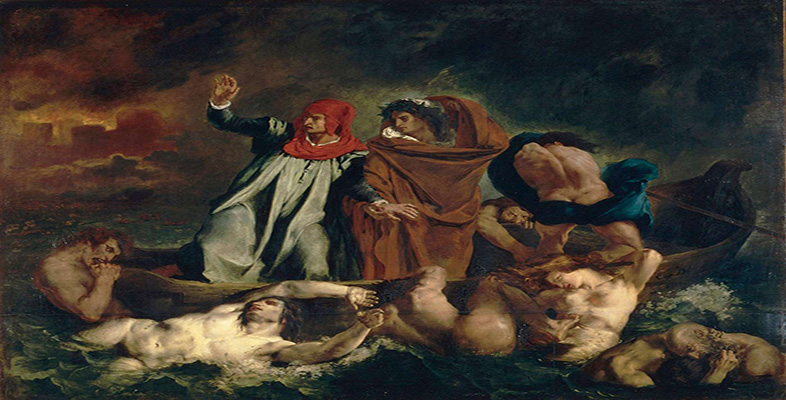2.7 Interpreting the classical form
The female nudes in The Death of Sardanapalus are of the curvaceous, fleshy, wild-haired type favoured by Rubens, slightly streamlined for a contemporary audience. We can see in the work the influence of Rubens’s Landing of Maria de’ Medici at Marseilles (1621–5) (Plate 6). The standing nude in the foreground of Delacroix’s painting was painted from life, but was influenced by a nereid (sea-nymph) in Rubens’s Landing as well as by one of the nudes in his Rape of the Daughters of Leucippus (Plate 7). The shoulder and upper arm of the man stabbing Delacroix’s nude were possibly influenced by the Triton (sea-god) in the left foreground of the Landing. These fleshy women are of a very different kind from the sleek, elongated nudes of Ingres (see his Grande Odalisque, Plate 8). The neoclassical was both linear and idealist in its approach. Ingres’s nudes are not only clearly contoured, but also the result of a Platonic conception of beauty which operated via a careful selection of elements from nature and the elimination of defects. It was not until the 1830s, however, that critics and commentators confronted the stylistic gulf that separated Delacroix from Ingres (see Carrington Shelton, 2000, p.728).
Click to see Plate 6: Peter Paul Rubens, The Landing of Marie de’ Medici at Marseilles [Tip: hold Ctrl and click a link to open it in a new tab. (Hide tip)] , 3 November 1600
Click to see Plate 7: Peter Paul Rubens, The Rape of the Daughters of Leucippus
Click to see Plate 8: Jean-Auguste-Dominique Ingres, La Grande Odalisque
Rubens represents a very different interpretation of ‘the classical’ from that favoured by the neoclassicists. His history paintings often use the luminous diagonals (shafts of light falling diagonally across the canvas), turbulent movement, luscious colour and sparkling objects that exerted such a profound influence on Delacroix, as on many other Romantic artists. It is interesting to speculate on the reasons for Delacroix’s preferences. They were probably, in part, temperamental: following the example of Rubens would have allowed him to work in a more painterly manner, with freer brushstrokes and with less fear of the laws of geometry and of the precision of a clear contour that had been so important in the works of Poussin and other sources for Neoclassicism. Also, in this case the style suits the subject: what better way to represent a collapsing regime than by means of a compositional technique that encapsulates collapse? The ‘orgy’ of colour is also appropriate to the subject, but was equally controversial.
